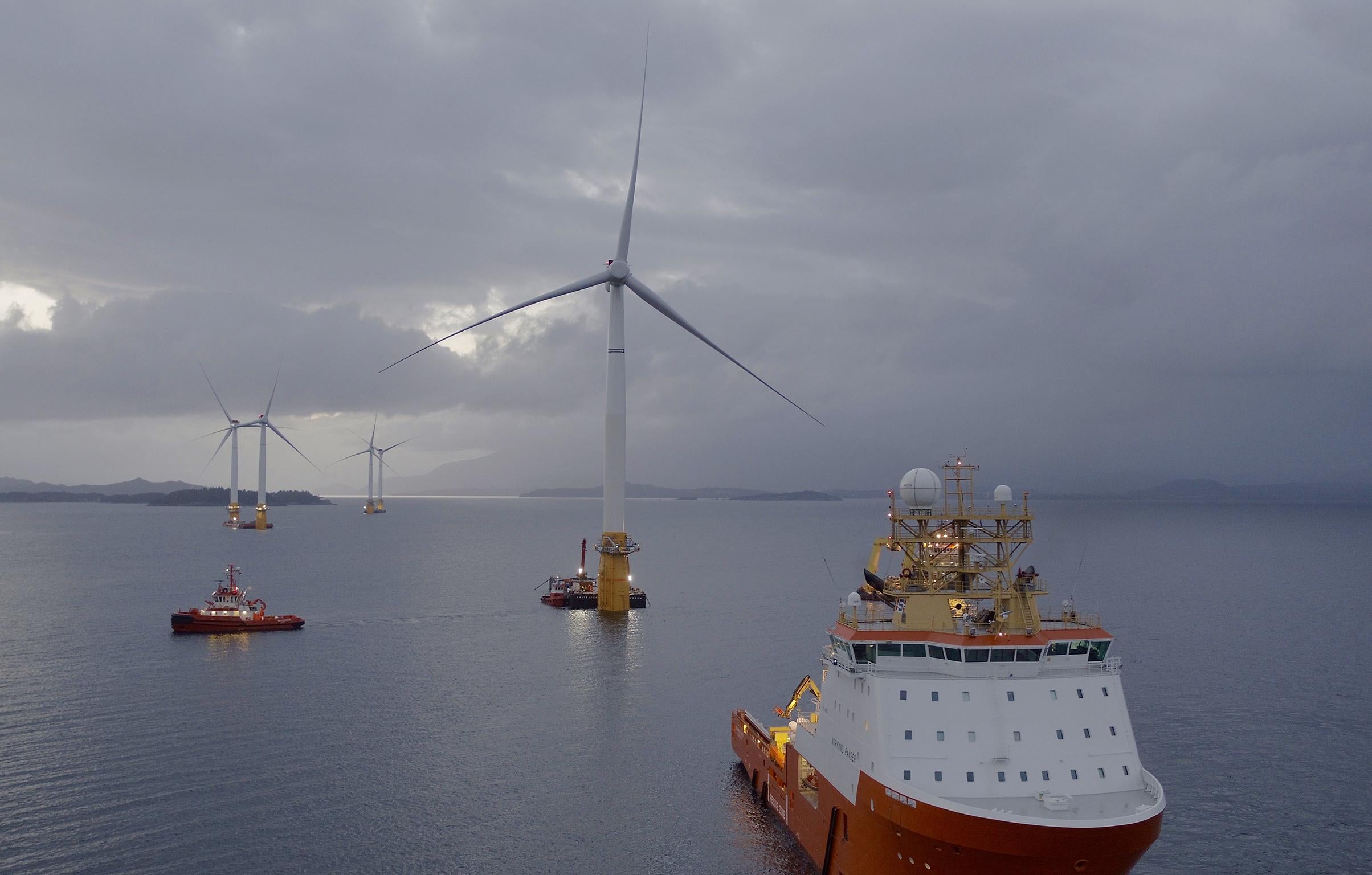World’s first full-scale floating wind farm is being built just of the coast of north-east Scotland
'This will further increase the global market potential for offshore wind energy'

Construction has begun on the world’s first full-scale floating wind farm, around 15 miles off the coast of north-east Scotland.
Five turbines will be installed, which together are expected to provide 30 megawatts of energy - enough to power 20,000 homes. One of the turbines is currently in place, with the rest expected to be in place by the end of August.
Leif Delp, the director of the £190m project known as Hywind, said the objective was “to demonstrate the feasibility of future commercial, utility-scale wind farms.”
He added: “This will further increase the global market potential for offshore wind energy, contributing to realising our ambition of profitable growth in renewable energy and other low-carbon solutions.”
A pilot floating turbine device has been successfully operating in Norway since 2009.
Each turbine is 175m high and weighs 11,500 tonnes, using a large buoy to keep upright. The turbines also make use of new blade technology, which sees the blades twist in order to lessen the impact of wind and currents.
The park will be around four square kilometers in size, with each turbine floating at a depth of between 95 and 120 metres.
Unlike normal turbines, floating turbines are not attached to the seabed by foundations. Rather, they are attached by long mooring tethers, allowing them to be placed in water as deep as one kilometre. Traditional fixed turbines work best at a depth of 20-50m.
If the current project is successful, it is hoped that they will be able to use them in waters previously considered too deep for wind turbines. Both the area around Japan and off the west coast of the US are considered “potential future markets”.
While the floating turbines are currently very expensive to manufacture, Hywind is optimistic that costs can be reduced by 40-50 per cent by 2030. They also claim that there has already been a 60-70 per cent cost reduction from the demonstration project in Norway.
Construction of the project has begun at an encouraging time for renewable energy in Scotland.
Recent analysis by WWF Scotland has revealed that the first six months of 2017 saw a record amount of renewable power produced – enough to power all of Scotland’s national grid for six days.
Subscribe to Independent Premium to bookmark this article
Want to bookmark your favourite articles and stories to read or reference later? Start your Independent Premium subscription today.

Join our commenting forum
Join thought-provoking conversations, follow other Independent readers and see their replies